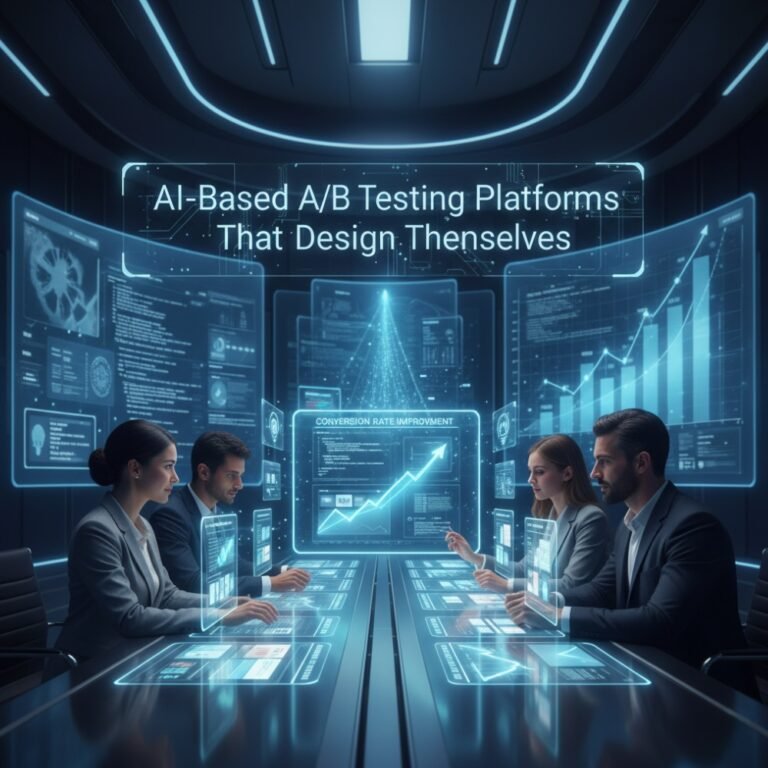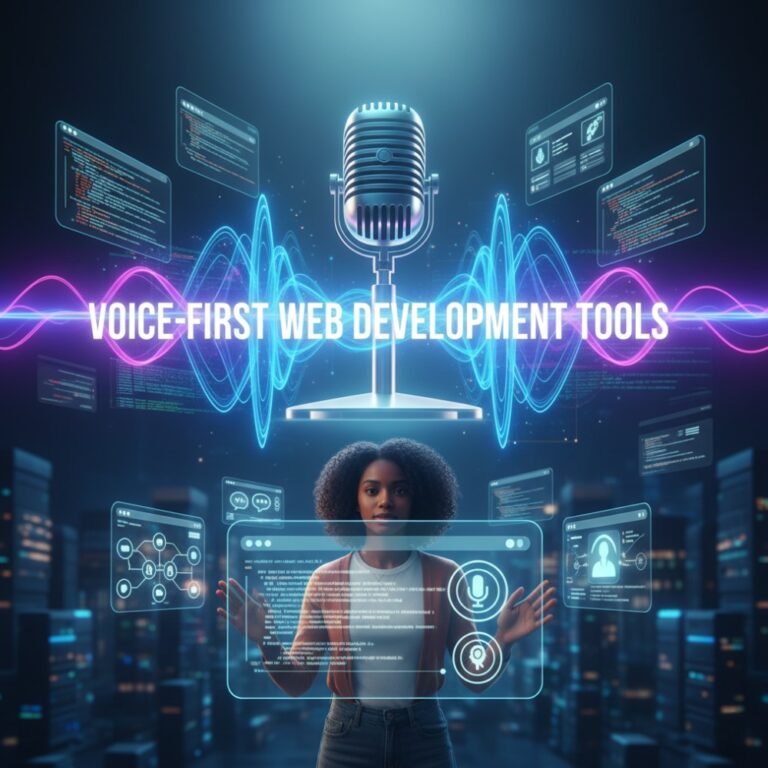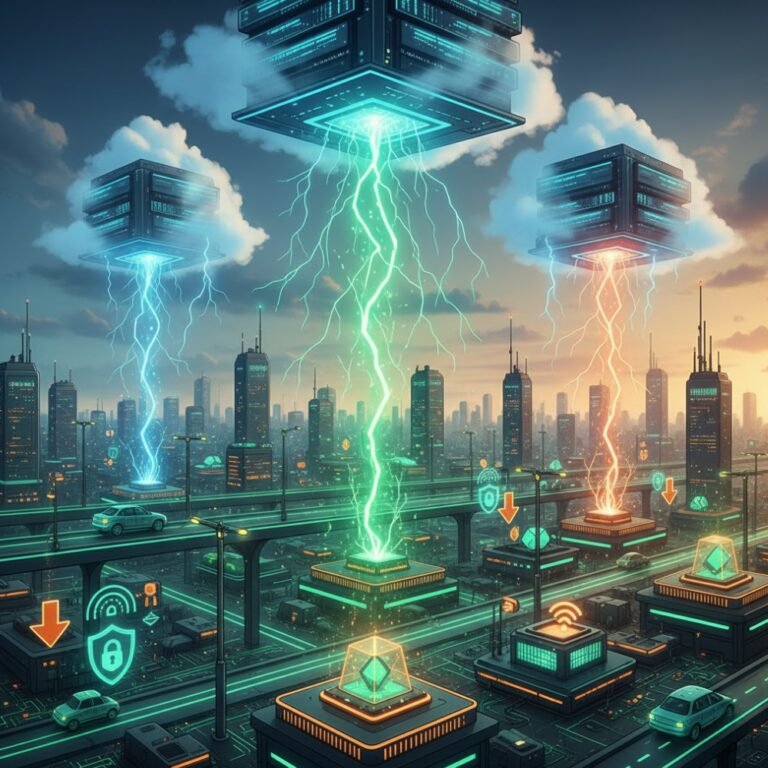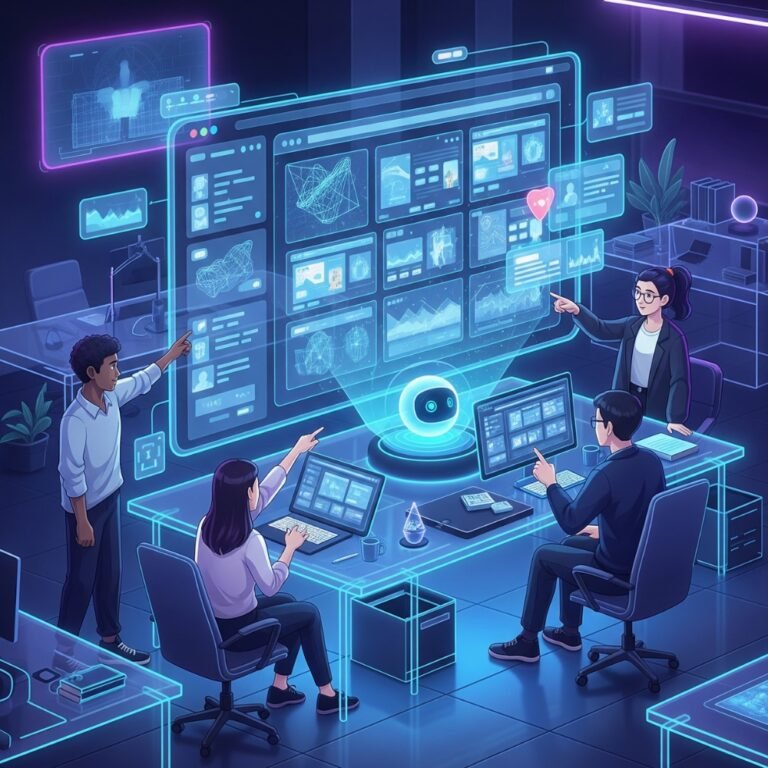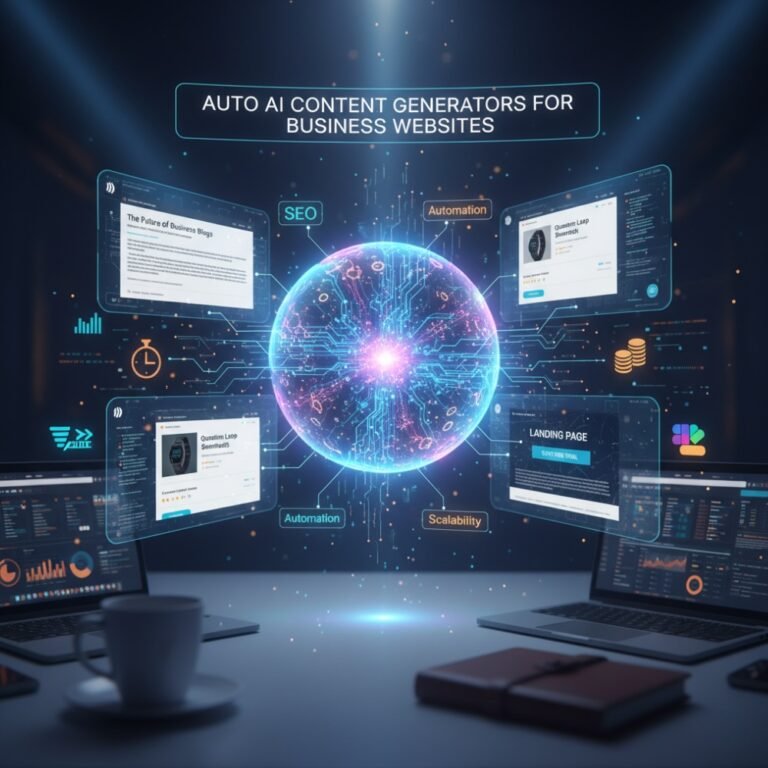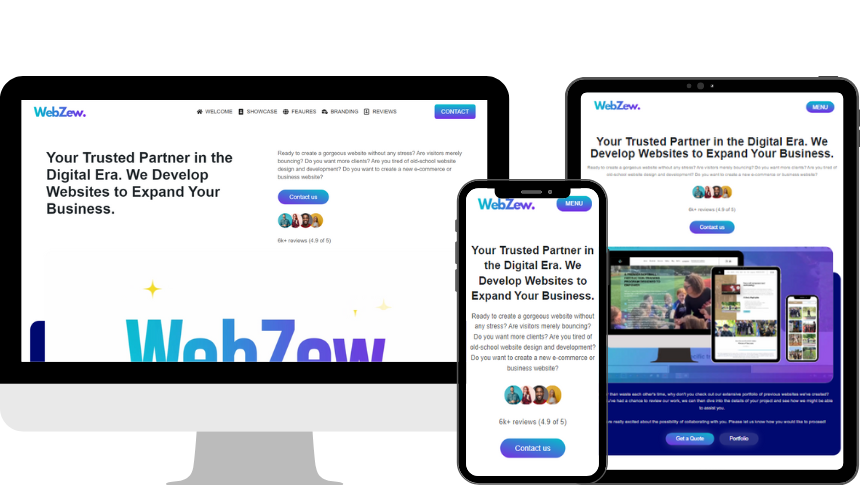AI-powered website builders are poised to transform web development by democratising access to professional-grade sites, reducing the need for manual coding in most scenarios. By leveraging machine learning and generative AI, these tools automate the entire process—from initial design to deployment—enabling non-technical users to create functional, visually appealing websites in minutes rather than weeks. This shift addresses key pain points in traditional coding, such as high development costs, lengthy timelines, and the steep learning curve for languages like HTML, CSS, and JavaScript. In 2025, platforms like Wix ADI and Framer AI demonstrate this potential by generating complete sites from simple descriptions, potentially displacing routine coding tasks for small businesses, solopreneurs, and rapid prototyping. While full replacement may not occur for complex enterprise applications, AI builders could handle 80-90% of standard websites, freeing developers for higher-level customisation and innovation. This evolution promises faster iteration, lower barriers to entry, and scalability, ultimately reshaping the web development landscape.
The Evolution of Website Building: From Hand-Coding to AI Builders
The journey of website building reflects technological advancements aimed at simplifying creation while enhancing accessibility and efficiency.
- Hand-Coding Era (1990s-early 2000s): Websites began with manual coding using HTML for structure, CSS for styling, and basic JavaScript for interactivity. Developers hand-wrote every line, often using table-based layouts for design. This approach demanded deep technical expertise but allowed precise control, though it was time-intensive and error-prone, limiting adoption to skilled professionals.
- Content Management Systems (CMS) (Mid-2000s-2010s): Tools like WordPress and Joomla introduced templating systems, enabling users to manage content without altering core code. CMS platforms separated design from content via dashboards, plugins, and themes, reducing the need for full hand-coding. However, customisation still required PHP or plugin tweaks, making it suitable for bloggers and small sites but cumbersome for unique designs.
- Drag-and-Drop Builders (2010s-early 2020s): Platforms such as Wix, Squarespace, and Webflow popularised visual editors, where users could drag elements like images and text blocks onto a canvas. This no-code/low-code paradigm eliminated most manual coding, offering pre-built templates and real-time previews. It empowered non-developers but often resulted in generic sites with limited flexibility for advanced features.
- AI-Powered Builders (2020s Onwards): The latest phase integrates artificial intelligence to automate beyond manual placement. Tools like Hostinger AI Builder and Durable use natural language processing to interpret user prompts and generate entire sites autonomously. By 2025, AI handles layout, content, and optimisation, marking a shift from user-driven assembly to predictive, intelligent creation. This evolution has made website building faster, more inclusive, and adaptive to user intent, with AI projected to dominate for standard use cases.
Why Traditional Coding Is Still Important Today?
Despite AI’s rise, traditional coding remains essential for web development in 2025, particularly for scenarios requiring depth and precision that automated tools cannot fully replicate.
- Customisation and Complexity: AI builders excel at standard templates but struggle with bespoke functionality, such as intricate algorithms, custom animations, or integrations with niche APIs. Hand-coding allows developers to tailor every aspect, ensuring sites meet specific business logic or user experiences that off-the-shelf AI outputs cannot achieve.
- Performance and Security: Manually optimised code can achieve superior speed and efficiency, crucial for high-traffic sites or e-commerce platforms. AI-generated code may introduce bloat or vulnerabilities, whereas traditional methods enable fine-tuned security protocols and lightweight structures compliant with standards like GDPR.
- Scalability and Maintenance: For enterprise-level applications, coding supports robust architectures that scale with growth, including backend systems and databases. It also facilitates long-term maintenance, debugging, and integration with legacy systems, where AI tools often fall short without human oversight.
- Innovation and Problem-Solving: Coding fosters a deeper understanding of web fundamentals, enabling developers to innovate beyond AI limitations, such as creating progressive web apps (PWAs) or handling edge cases in real-time data processing. In an AI-augmented world, coders act as overseers, refining AI outputs for optimal results.
Overall, while AI handles routine tasks, traditional coding underpins reliability and creativity in demanding projects.
What AI-Powered Website Builders Are and How They Differ from Older Tools?
AI-powered website builders are platforms that employ artificial intelligence—primarily generative models like GPT variants and computer vision—to create, design, and optimise websites based on user inputs, often without requiring coding knowledge. Examples in 2025 include Wix ADI, Hostinger AI, and 10Web, which analyse descriptions to produce deployable sites.
They differ from older tools in several key ways:
- Automation Depth: Unlike hand-coding’s manual labour or CMS’s template reliance, AI builders proactively generate code, content, and designs from minimal input, reducing creation time from days to minutes.
- User Interaction: Drag-and-drop tools demand visual arrangement, but AI uses conversational interfaces for intuitive creation, making it accessible to complete beginners compared to the technical barriers of prior methods.
- Intelligence and Adaptability: Older builders offer static templates, whereas AI incorporates learning algorithms for personalised outputs, such as adapting to brand guidelines or predicting user needs, resulting in more dynamic and efficient sites.
- End-to-End Functionality: While CMS and drag-and-drop focus on front-end assembly, AI handles holistic aspects like SEO, responsiveness, and integrations automatically, bridging the gap to professional development without expertise.
This makes AI builders ideal for quick, cost-effective launches, though they may require post-generation tweaks for uniqueness.
Core Capabilities of AI Website Builders
AI website builders offer a suite of advanced features powered by machine learning, enabling seamless site creation. Below are the core capabilities:
Natural Language Prompts to Create Websites
Users describe their site in plain English (e.g., “A modern e-commerce site for handmade jewellery with a blog”), and AI interprets this to generate a full structure, including pages, navigation, and elements. Tools like Framer AI and Durable use natural language processing (NLP) to map prompts to code, eliminating the need for technical specifications and allowing rapid ideation.
Automatic Layout & Design Generation
AI algorithms analyse content and user goals to auto-arrange elements into balanced layouts, suggesting sections like hero banners or galleries. Unlike manual drag-and-drop, this predictive design uses generative adversarial networks (GANs) for cohesive visuals, ensuring professional aesthetics without user intervention.
AI-Driven Colour Palettes, Typography, and Branding
Based on industry trends or user preferences, AI selects harmonious colour schemes, fonts, and logos that align with branding. For instance, Wix’s AI scans competitor sites or mood boards to propose palettes, while tools like Zintego generate custom typography stacks for consistency across the site.
Built-In SEO Optimisation
AI automatically incorporates search engine best practices, such as meta tags, keyword integration, alt text for images, and sitemap generation. Platforms like 10Web use NLP to suggest and implement SEO-friendly content, improving visibility without manual audits, and often include performance monitoring for ongoing tweaks.
AI Copywriting for Website Text
Generative AI crafts compelling, tailored text for headlines, descriptions, and calls-to-action, optimised for tone and length. Tools like Hostinger AI pull from user prompts to produce SEO-rich copy, reducing writer’s block and ensuring brand-aligned messaging.
Automated Responsiveness (Desktop, Mobile, Tablet)
AI ensures sites adapt fluidly across devices by generating responsive code that adjusts layouts, fonts, and images dynamically. Using frameworks like Bootstrap under the hood, builders like Appy Pie test and optimise for various screen sizes automatically, avoiding the manual media queries of traditional coding.
Smart Integrations (Payment Gateways, Booking Systems, CRMs, Chatbots)
AI detects site needs and suggests or auto-configures third-party tools, such as Stripe for payments, Calendly for bookings, HubSpot for CRMs, or Intercom for chatbots. Platforms like B12 seamlessly embed these via APIs, handling authentication and data flow without custom coding, streamlining functionality for e-commerce or service-based sites.
Future Trends in AI-Powered Website Builders
As of September 2025, AI-powered website builders are evolving rapidly, integrating advanced technologies to create more immersive, autonomous, and user-centric experiences. These trends build on current capabilities, leveraging agentic AI, multimodal models, and spatial computing to push beyond static sites towards interactive, adaptive digital ecosystems. Predictions indicate that by 2030, AI could automate up to 80% of web development tasks, but 2025 marks a pivotal year for adoption in AR/VR, voice interfaces, and full-stack automation.
AI + AR/VR Websites (Metaverse-Ready Sites)
AI integration with augmented reality (AR) and virtual reality (VR) is transforming websites into metaverse-ready platforms, enabling seamless blending of digital and physical worlds. AI enhances AR/VR by powering real-time rendering, object recognition, and contextual awareness, allowing websites to host immersive experiences like virtual product try-ons or 3D showroom tours directly in browsers. For instance, tools like Apple’s Reality Composer Pro and Meta’s Motivo model simplify creating AR/VR-compatible sites, reducing the need for manual 3D modelling. In website builders, this means generating metaverse-ready sites with AI-driven avatars and environments, such as Epic Games’ Unreal Engine 6 for cross-platform virtual worlds. By 2025, expect widespread use in e-commerce and education, with AI analysing user data to personalise AR overlays—71% of consumers already anticipate such tailored interactions. Platforms like CodeDesign.ai are poised to incorporate these features, making immersive sites accessible via drag-and-drop interfaces.
Voice-Command Website Building
Voice-command interfaces represent a shift towards natural, hands-free website creation, powered by advanced natural language processing (NLP) and speech recognition. Users will describe sites verbally (e.g., “Build a responsive portfolio with blue tones and a contact form”), and AI will generate, edit, and deploy them in real-time, extending beyond current text prompts. This trend builds on voice assistants like Siri and Alexa, integrating them into builders for intuitive navigation and support. By 2025, platforms like CodeDesign.ai predict voice and gesture-based design as standard, enabling non-technical users to iterate designs conversationally. Challenges include accuracy in complex commands, but improvements in multimodal AI will make this viable for rapid prototyping, democratising development further.
AI-Driven Personalisation (Dynamic Websites Tailored per Visitor)
AI-driven personalisation will make websites dynamically adapt to individual visitors, using real-time data analysis to customise layouts, content, and interactions. Machine learning algorithms will track behaviours, preferences, and even emotions (via facial recognition) to serve tailored experiences, such as adjusting product recommendations or page readability on the fly. In builders, this involves agentic AI systems that autonomously update sites based on visitor metrics, far surpassing static templates. For example, personal large action models (PLAMs) could manage user-specific schedules or purchases directly on sites. By 2025, this will boost engagement, with AI chatbots providing 24/7 personalised support, and tools like those from Google and Meta enabling emotion-adaptive interfaces. The result: websites that feel uniquely crafted for each user, improving retention and conversion rates.
Integration with Generative AI for 3D, Video, and Immersive Experiences
Generative AI will embed 3D models, videos, and immersive elements into websites effortlessly, creating rich, interactive content without specialised skills. Tools will auto-generate photorealistic 3D assets (e.g., via Gaussian Splatting from Google/Niantic) or dynamic videos tailored to user queries, enhancing sites for gaming, retail, and training. In AR/VR contexts, AI will produce adaptive environments, like virtual dissections or custom narratives in education apps. Website builders like Wix and emerging platforms will integrate multimodal generative models to output immersive videos or 3D tours from prompts, with real-time personalisation. By 2025, this trend will proliferate in metaverse applications, where AI handles content creation for virtual events, making sites more engaging and lifelike while reducing production time.
AI Replacing Not Only Frontend but Also Backend Coding
AI’s expansion to backend coding will automate server-side logic, databases, and APIs, moving beyond frontend design to full-stack development. Agentic AI, such as Microsoft’s GitHub Copilot or OpenAI’s Operator, will write, debug, and optimise backend code autonomously, handling tasks like data processing or security protocols. Large action models (LAMs) like Claude 3.5 Sonnet will execute complex decisions, such as integrating e-commerce bookings or DAOs for financial operations. In builders, this means no-code platforms generating scalable backends from descriptions, with CUAs (computer-using agents) managing deployments. By 2025, AI could replace 50-70% of routine backend work, though human oversight remains for intricate customisations, enabling faster, more secure site launches.
“No-Human-Intervention” Website Launch Pipelines
Fully automated, no-human-intervention pipelines will streamline website creation from ideation to deployment, using AI to handle every stage without manual input. Agentic systems will monitor performance, suggest optimisations, and even scale infrastructure in real-time, creating self-sustaining sites. For example, AI will auto-adjust layouts for responsiveness, populate content via generative models, and integrate third-party services seamlessly. Platforms like CodeDesign.ai exemplify this with continuous analytics and SEO tweaks post-launch. By 2025, these pipelines—powered by LAMs and PLAMs—will dominate for small-to-medium sites, reducing costs by 90% and enabling instant global deploys, though ethical considerations around AI autonomy will arise.


